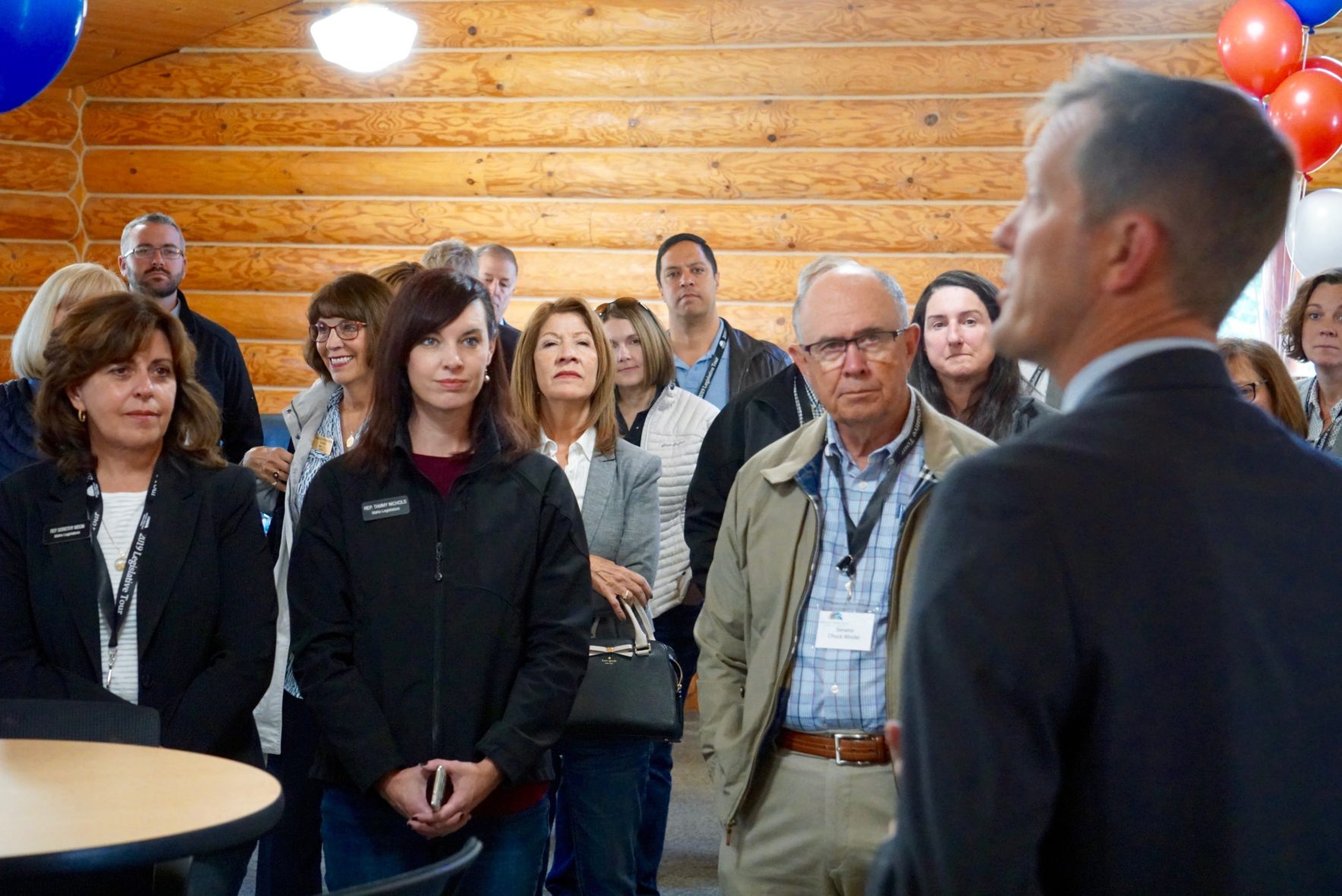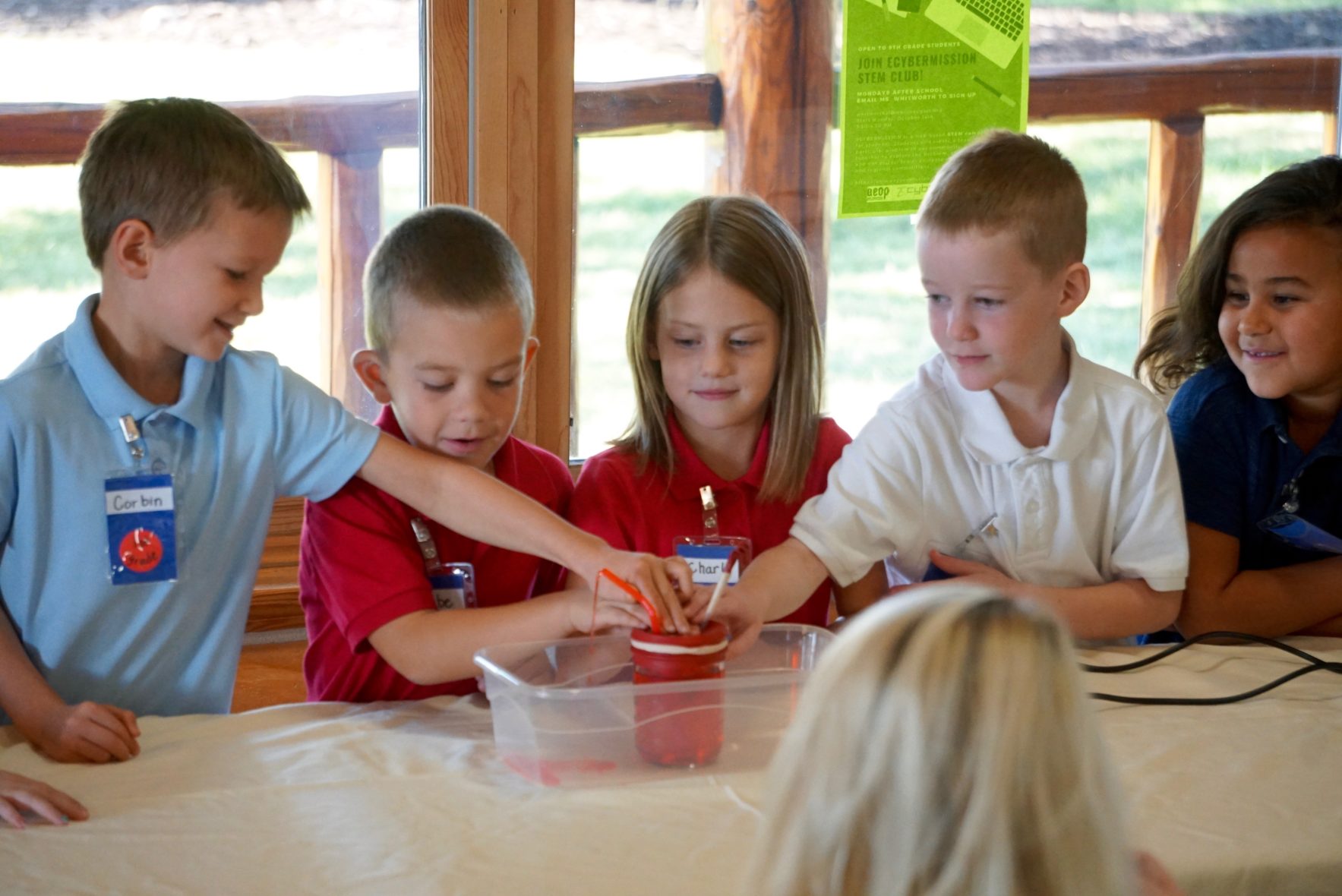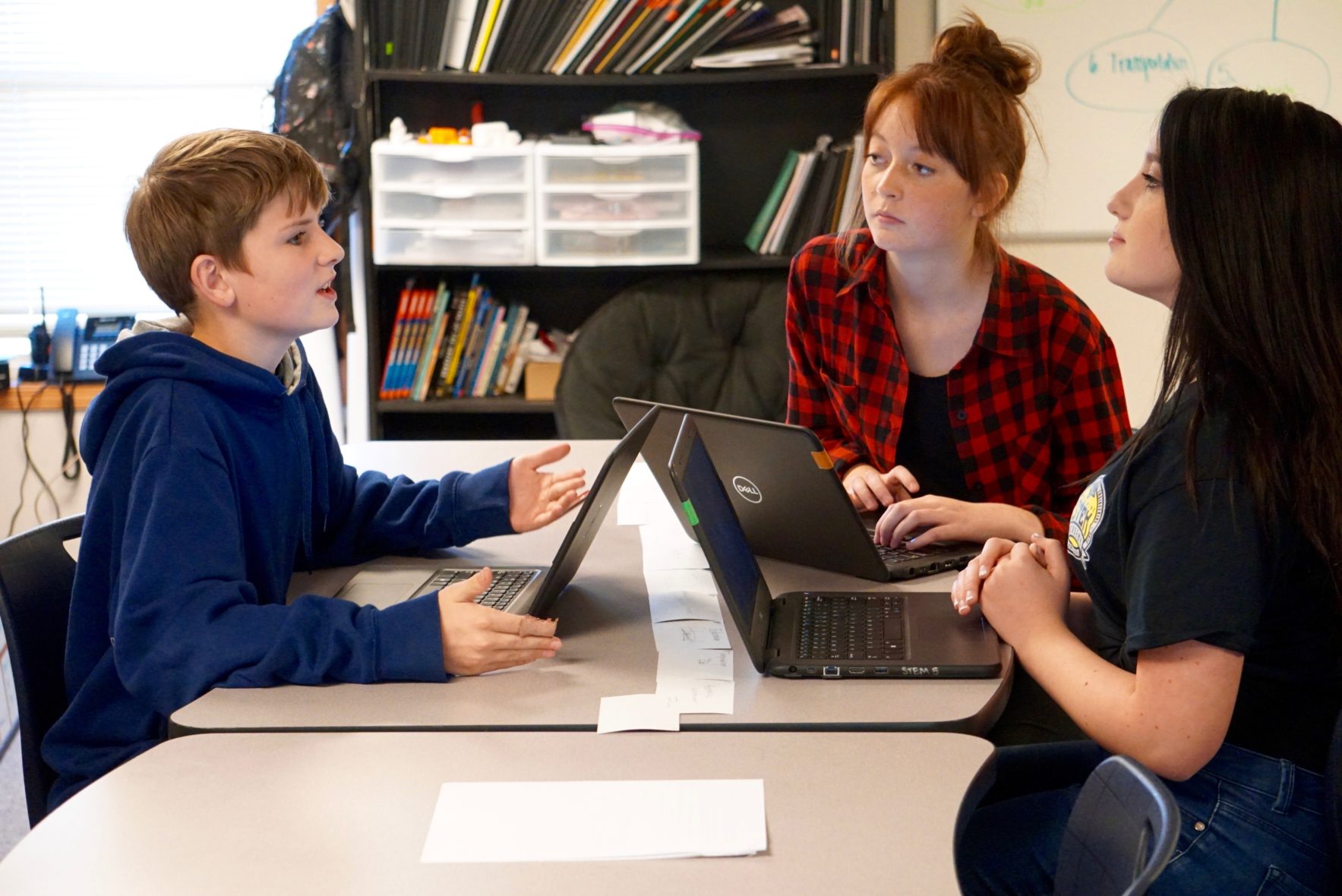IDAHO FALLS — First graders pumped fake blood through a straw in a Mason jar to illustrate blood flow in a human heart.
They ended the demonstration with a poem for a roomful of lawmakers.
“Our heart is always working, it’s busy night and day,” the kids said in iambic unison. “It’s pumping while I’m sleeping and while I work and play.”
The object lesson and lilting verselet were part of a Greater Idaho Falls Chamber of Commerce-sponsored tour that on Monday brought 50 Idaho lawmakers to White Pine STEM Academy, local businesses and Idaho National Laboratory.

The hour-long stop at White Pine allowed students from kindergarten to high school to demonstrate their skills in science, technology, engineering and math.
It also allowed lawmakers to see how STEM can put students on paths to fill high-need jobs in a diversifying local economy, said chamber CEO Chip Schwarze.
“East Idaho is about more than just potatoes,” said Schwarze, who helped organize the tour through corporate sponsorships.
Schwarze pointed to shortages of qualified workers in local tech and manufacturing sectors, and dozens of new jobs expected to follow the recent opening of two cybersecurity facilities at INL.
STEM is key to building a workforce equipped to fill these types of positions, Schwarze said.
During their tour of the school, several legislators floated questions aimed at gauging student learning in STEM.

“How big is the heart?” one lawmaker asked the group of first graders.
“This big,” said one student, raising her fist.
“Are hearts really shaped like a heart?” another legislator asked.
“No,” several students answered simultaneously.
Sen. Mary Souza, a former cardiac nurse, was impressed by students’ understanding of the vital organ.
“You already know more than some of my past patients,” Souza, R-Coeur d’Alene, told the youngsters.
Other lawmakers watched teens earn certificates in Microsoft and Adobe systems. In a nearby classroom, an augmented virtual reality system provided students with interactive lessons on the periodic table of elements.
Some of the school’s eighth graders worked on a project to create future cities. Students Claire Billings and Timothy Morgan considered how to bring water to their city, “Westlake.”

Students start by drawing their cities on paper. Then they create them digitally in SimCity, a city-building video game, and create a 3-D replica to be judged for advancement to a state competition.
The project requires students to rank and implement services for citizens, from transportation to food. Westlake’s top priorities: food, water and education.
“We put education high on the list to make sure that people could implement all the other important things that come after,” Morgan said.
Tree houses are also a staple in Westlake — not only because they reduce deforestation and promote healthy habitats, Morgan said, but “because they are awesome.”
